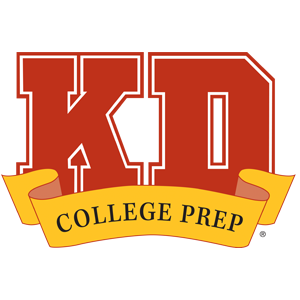If one of your parents graduated from college, you have probably heard stories about “When I was in school…”
Advice from someone who has been through the process before can be insightful and valuable. But it is also important to consider how your college admissions experience may differ from what your parents’ experience was like in 1995 or before then.
The landscape of college admissions is constantly evolving, and events like the COVID-19 pandemic are affecting how colleges will examine applications in the near future. However, taking the time to thoroughly research each college’s unique differences can help you adequately prepare for the college of your dreams.
In this post, we go over 10 ways college admissions has changed over the last 25 years and provide insight for how students can strengthen their college applications. We will also share how COVID-19 has impacted college admissions for the college class of 2024 and beyond.
10 Ways College Admissions Has Changed
1. Lower Acceptance Rates at Competitive Colleges and Universities
More young adults than ever attend college today. Between 1970 and 2017, the undergraduate enrollment in United States colleges more than doubled. By October 2019, about 66 percent of American high school graduates enrolled in colleges or universities.
In fact, the competition for acceptance to elite colleges is fiercer than ever. Highly competitive colleges like Harvard, Yale, and Stanford have seen a dramatic increase in the number of applications received, resulting in an overall lower admittance rate.
For example, the acceptance rate for Harvard’s 1995 freshman class was 11.8 percent; for this year’s incoming freshmen, the acceptance rate was 4.92 percent.
While some top-ranked colleges and state flagship universities have become more competitive, the majority of colleges across the nation have seen an increase in admission rates over the past 18 years.
Overall, nearly 80 percent of ranked schools accept more than half of students who apply. That means that there is a place for nearly every student who wants to attend a four-year college or university.
2. Higher Cost in Tuition and Living Expenses
Since 1981, college prices have risen five times faster than family incomes. About 69 percent of students who graduated from public and private nonprofit colleges in 2019 had student loan debt. On average, these students graduated with an average of $29,900 in debt.
Before college, you need to apply for financial aid and scholarships—and then continue applying each year of your education.
College Application Fees
Even the college application process is expensive! The average cost for a college application is $50, and some schools charge nearly $100 to apply. When applying to multiple colleges, those costs can add up quickly.
Of course, there are ways to eliminate expensive college application costs. Students who qualify for free or reduced lunch services in high school can begin by asking about college application fee waivers.
Most colleges have information about fee waivers on their websites. Students can even get waivers for applying online, visiting colleges, or alumni relation.
3. Scholarships and Financial Aid
While the cost of college has increased drastically over the years, so has the percentage of students who earn scholarships. In 2015, 8.1 percent of undergraduate students used scholarships to help pay for college, up from 3.6 percent in 1995.
However, it is very rare for a student to earn a full-ride scholarship. In 2015, only about 1.5 percent of undergraduates received enough scholarships and aid to pay 100 percent of the cost of attendance. These statistics were pulled from the National Postsecondary Student Aid Study.
Because of the cost of attending college remains high with a scholarship, we recommend that families apply for free financial aid. Financial aid from your university or the federal government sometimes comes with grants, a form of financial aid that you do not need to repay.
Colleges determine a family’s financial need using the Free Application for Federal Student Aid (FAFSA). Everyone should complete the official government financial aid application, but some students may also need to fill out the CSS/Financial Aid Profile. More than 300 colleges, professional schools, and scholarship programs require this profile to award institutional financial aid and scholarships.
For help applying for financial aid or finding waivers, read our post, “Decoding Your Financial Aid Package” or reach out to your high school counselor.
4. Standardized Testing Changes
Many parents remember taking either the SAT® or ACT® test, but maybe not both. Now, all colleges will accept either test.
We recommend taking both tests to let the results help highlight which test on which the student performs best. You will not know how well you could have done if you never try one of the tests.
Because college admissions is much more competitive than it used to be, it is often the student’s best interest to try both tests. Colleges and universities will accept the highest scores, and great scores on both tests can act as an added advantage to your application.
For more insight on which test to take, read “Differences Between the ACT and SAT Tests.”
SAT Test Changes
The SAT test changed drastically in 2016, so it is not the test that many parents remember. In fact, it now looks similar to the ACT test in many ways.
The SAT test has now made the essay portion optional and scores it as a separate component entirely. There is no longer a guessing penalty on the SAT test, meaning that students should try to answer every question.
Another major change is that the test is now scored differently. The new version of the test is graded on a scale of 400-1600 points, with 1600 being a perfect score on the test. There were also changes involving the number of questions, content in test sections, timing, and more.
ACT Test Changes
In September 2019, the ACT announced important changes: section retakes, superscoring, and an online testing option for students retaking the test.
The ACT test has a much faster pace than the SAT test and includes a separate science section which can be hard for some students. The ACT test also has an optional writing portion, which contains three different perspectives on an issue that the student is asked to evaluate and compare with his or her perspective.
When students receive their ACT test scores, in addition to the usual individual and composite scores, they also receive scores describing performance in categories such as STEM, career readiness, and English language arts.
You can receive a 36 Composite Score (sometimes considered the perfect score) without getting every single question right.
5. Application Changes
According to NACAC, 36 percent of first-time freshman applicants submitted applications to seven or more colleges in 2017. This percentage has tripled since 1995. It is estimated that 80 percent or more of freshman applicants since 2013 applied to three colleges or more, which is up from 61 percent in 1995.
This drastic increase in college applications also affects how much time college admissions officers spend reviewing each application.
The expectation used to be that a college would review your application at least twice, but colleges no longer promise this. Some schools, like Stanford University, openly state that very few applications get reviewed more than once.
It is estimated that highly competitive colleges spend eight minutes or less reviewing each application.
As a result, it is more important than ever to create an application that stands out. Everything, from your test scores to the first sentence of your college essay, should be carefully crafted with this goal in mind.
For the best results, we recommend starting with creating a balanced college list of about 7-10 colleges. And remember that more college applications means more essays! We offer college essay editing and assistance for students who need help staying on track.
New Application Tools
It is easier than ever to apply to colleges, which is a major reason that students apply to more schools. Students have several options when it comes to college application platforms.
Common Application is one popular choice. When the Common App started in the 1970s, there were only 15 member colleges. Now, more than 800 universities use this application, and it has become a prominent part of the college admissions process.
The Common Application streamlines the application process by allowing students to apply to multiple schools at once.
Keep in mind that not every school accepts the Common App, and the list is always changing. Other application options include the Coalition Application and the Universal College Application.
Some schools even have their own school or university system-specific applications. For example, the University of California system has its own application, the only platform accepted by UC schools.
ApplyTexas.org serves as the common application for state schools and some private universities in Texas. Students can visit a college’s website to determine which applications the school accepts.
Put Your Best Foot Forward
There are several things you will need to know or have completed before you begin applying for college.
In addition to basic information, you will need:
- Money for the college application fee
- Your high school transcript (often sent to the college directly from your high school)
- A list of extracurricular activity information
- Recommendation letters (if required)
- SAT and/or ACT test scores (can be sent by the testing organization directly to the college)
- Completed college essays (if required).
See college and university websites, which detail specific requirements for recommendation letters and essays. If some of these items are optional, we encourage students to strive to submit all recommended materials.
Remember that the college application process is like a competition, so you want to put your best foot forward.
We offer the APPLY NOW! Boot Camp, a four-day event held during the summer in which our college counselors work with students to create two edited college essays, an edited resume, and two college applications (the Common App and ApplyTexas). These sessions give students a head start on the college application process and provide them with insight on what college admissions officials look for when reviewing applications.
6. More Opportunities to Qualify for Specialized Degree Programs
Dual majors, honors programs, semesters abroad, combined bachelor’s and master’s programs, and other specialized degree programs have increasingly grown in popularity over the last 25 years.
These specialized programs give advanced students a more robust undergraduate education. In some cases, students can even follow an accelerated path through grad school, in which they can obtain master’s or doctoral degrees over a shorter span of time.
These highly competitive college opportunities often involve higher barriers of entry than the general college admission requirements for the college.
If you strive to apply for a specialized program, visit the college’s website or give the admissions office a call to ask about the program’s specific requirements.
7. Your Digital Footprint
While the Internet was around in 1995, it was not nearly as obtrusive as it is today. The closest thing to Facebook that your parents had was the high school yearbook.
In case you did not already know, your social media accounts can sometimes factor into whether or not a college accepts you.
Inside Higher Ed estimates that about 36 percent of college admissions officers say that they look at social media profiles as part of the application review process.
You may consider this an invasion of privacy. But you do not want anything you post to portray you in a negative light and prevent you from getting into your dream college. Just be mindful about what you post and who you let see it.
8. Researching Colleges Is Easier Than Ever
While the presence of digital technology makes some aspects of the admissions process more challenging, it also brings many benefits.
Nowadays, it is very easy to research colleges online. Even if you cannot travel across the country to visit a college campus, you can take a virtual tour to get a feel for what attending college there would be like.
You can also read professor reviews online, explore the Instagram feeds of the college and current students, skim through the college newspaper online, and read blogs about what the student experience is like.
Many colleges also have lots of information on their website to fill you in on facts and figures, history, student traditions, and more.
9. Financial Value of College Majors
Another important factor to consider is how some college majors and the job market have changed over the years.
Job demand is constantly adapting to the market, and it’s important to do extensive research on the career path you plan to follow before choosing a major in college.
For example, computer engineering is a major that has exploded in popularity and demand over the last 25 years. Careers in the medical field also have a growing demand due to the growing population and increased life expectancy for Americans.
If you’re interested in learning about where your major falls, read this study by Georgetown University called “The Economic Value of College Majors.”
10. COVID-19’s Impact
It is no mystery that COVID-19 will continue to shape the world of college admissions over the next few years.
College Visits
Many schools have canceled, postponed, or limited college admissions visits due to increasing concerns about the virus.
As colleges start to welcome visitors again, they may require extra steps such as wearing masks and appointment-based visits. Virtual college visits and info sessions have grown in popularity and may even become the new normal.
We recommend that you visit the college’s website to find out whether they are currently allowing admissions visitors. Some schools, like Yale, have virtual tours and other events that you can sign up for to learn more about the college.
Test Optional
Many colleges are moving to “test optional,” meaning that you can submit an application without test scores this year.
Keep in mind that this does not mean that colleges have become “test blind.” Test scores will remain an important component of your college application, and colleges will likely still use them to help determine admission to competitive degree programs, honors colleges, and scholarship opportunities. We cannot emphasize this enough; you want to put your very best foot forward in order to stand out.
However, if you did not get a chance to take or retake the test during the spring or summer of 2020, do not let this prevent you from applying. Keep in mind that other aspects of your application (like your high school transcript, extracurriculars, letters of recommendation, or essays) may hold more weight in determining college admissions.
Will colleges be in session during the pandemic?
Colleges across the country have welcomed students back to campus. Many Texas colleges will have students return in the fall with a few changes to limit the spread of COVID-19.
The virtual classroom experience will likely become an aspect of the college experience over the next few years. This may change whether you plan to attend a college with high tuition and fees, especially if classes are online.
COVID-19 may have also raised your concerns about traveling far from home to attend college.
At this time, you should sit down with your parents to discuss how COVID-19 will impact your college experience.
If you have specific questions about how a university plans to adapt to this new environment, contact the college’s admissions office to get the most accurate and up-to-date information.
Need advice for applying to college?
We also offer a wide range of test prep and college counseling services to help you get into the college of your dreams. Contact us to schedule a free consultation to learn more about our programs.














































